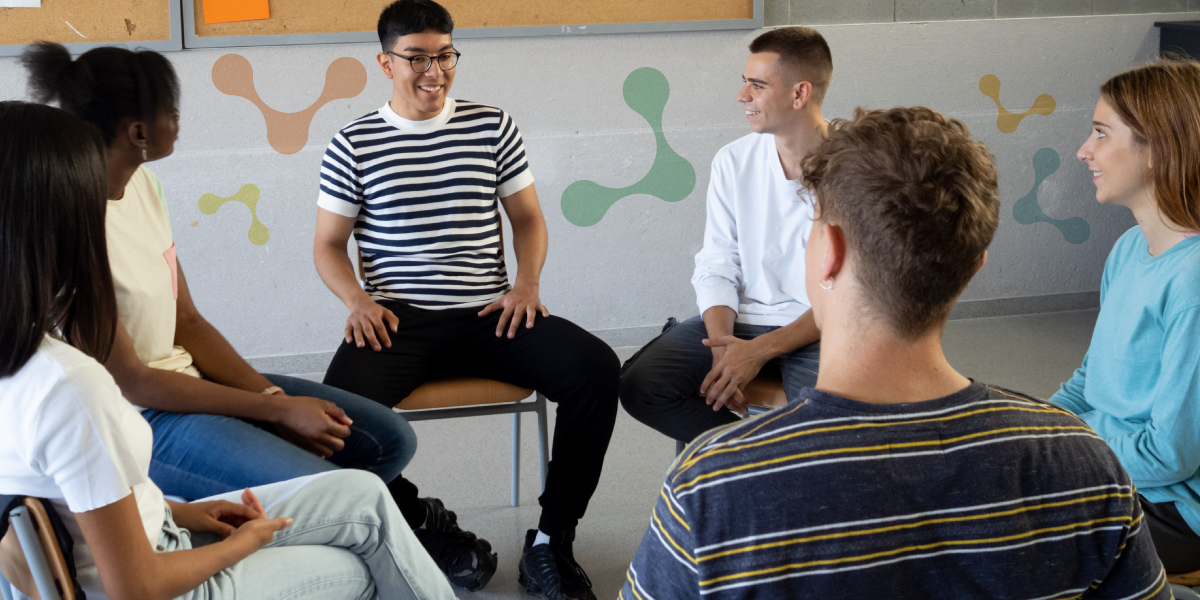By centering student voices and prioritizing belonging, self-efficacy, and motivation, schools can create environments where every freshman feels empowered to succeed.
For freshmen, the transition into high school is a critical juncture. It’s a time when students are developing their identities, building connections, and navigating new academic and social expectations. Schools must move beyond traditional metrics to support this transition effectively and embrace a deeper understanding of students’ experiences. Listening sessions, rooted in the principles of Street Data (Safir & Dugan, 2021), provide a transformative approach to fostering belonging, self-efficacy, and motivation among freshmen.
Why Listening Sessions Matter
Listening sessions are structured opportunities to hear directly from students, families, and educators about their lived experiences within the school. They focus on amplifying marginalized voices, offering qualitative insights that traditional metrics like grades and attendance cannot capture. According to Safir and Dugan (2021), listening sessions fall into the realm of “street data,” the most granular and human-centered form of data. Unlike satellite data (broad metrics) or map data (disaggregated patterns), street data provides actionable insights by revealing the nuanced stories behind the numbers.
Especially for freshmen, the insights are important. The ninth-grade year is often marked by challenges related to identity, belonging, and self-regulation. Listening sessions create space for students to:
- Share their experiences of the school environment.
- Reflect on the barriers they face and the support they need.
- Build trust and connection with educators and peers.
This process not only informs decision-making but also fosters a sense of agency and inclusion, which are foundational to academic and personal success.
 Listening to Build Belonging
Listening to Build Belonging
Belonging is a cornerstone of student success. When students feel seen, heard, and valued, they are more likely to engage in learning and persist through challenges. Listening sessions are a powerful way to cultivate belonging by:
- Demonstrating that student voices matter.
- Identifying systemic issues that undermine inclusion.
- Co-creating solutions with students to address their needs.
For example, a listening session might reveal that freshmen feel isolated in larger classes or struggle to find safe spaces to connect with peers. This insight can lead to targeted interventions such as peer mentoring programs, advisory periods, or inclusive extracurricular activities. According to Safir and Dugan (2021), creating these “belonging experiences” is essential for addressing equity gaps and fostering a positive school culture. Similarly, Gay (2010) highlights the importance of culturally responsive teaching practices in creating environments where students’ identities are affirmed and valued.
Elevating Self-Efficacy Through Listening
Self-efficacy—the belief in one’s ability to succeed—is another critical factor in keeping freshmen on track. Listening sessions empower students to:
- Reflect on their strengths and challenges.
- Voice their aspirations and goals.
- Collaborate with educators to set meaningful, attainable objectives.
When students feel heard, they are more likely to see themselves as capable contributors to their own success. For example, a student who shares their struggles with time management during a listening session might be paired with a mentor or receive targeted skill-building support. As Safir and Dugan (2021) note, fostering self-efficacy is key to helping students develop the resilience needed to overcome obstacles. Steele (2010) further emphasizes that reducing stereotype threat through affirming and supportive practices is crucial for empowering students, particularly those from historically marginalized groups.
Motivating Freshmen Through Voice and Agency
Motivation is deeply tied to a student’s sense of purpose and agency. Listening sessions tap into this by:
- Helping students connect their learning to their interests and goals.
- Offering opportunities for students to lead initiatives or provide feedback on school policies.
- Creating a collaborative environment where students feel invested in their school’s success.
A listening session might reveal, for instance, that students are more motivated when they see their culture and experiences reflected in the curriculum. This insight can drive culturally responsive teaching practices that make learning more relevant and engaging (Hammond, 2015). Providing opportunities for students to co-create classroom norms and learning activities can further enhance their sense of agency and intrinsic motivation.
Practical Steps for Effective Listening Sessions
To maximize the impact of listening sessions, schools should follow these best practices:
1. Prepare Thoughtful Questions: Frame questions around themes of belonging, self-efficacy, and motivation. For example:
- “What helps you feel like you belong at school?”
- “What goals are most important to you this year?”
- “What motivates you to do your best in class?”
2. Engage Diverse Perspectives: Ensure participation from students across different backgrounds and experiences. This inclusivity enriches the data collected and ensures equitable solutions.
- Facilitate Safe, Open Dialogue: Create a supportive environment where students feel comfortable sharing candidly. This might involve training facilitators or using small group formats.
- Act on What You Hear: Use insights from listening sessions to inform decisions, and communicate back to students about how their input is shaping change. This reinforces the value of their voices and builds trust.
- Measure Impact: Combine street data from listening sessions with satellite and map data to evaluate the effectiveness of interventions and identify areas for further growth.
Listening as a Pathway to Equity
Listening sessions are not just a tool for gathering data; they are a catalyst for cultural transformation. By centering student voices and prioritizing belonging, self-efficacy, and motivation, schools can create environments where every freshman feels empowered to succeed. This aligns with the principles of Street Data, which emphasize the importance of human-centered, equity-driven practices in education.
As we strive to ensure that freshmen are on track, let us remember the power of listening—not just to hear, but to act, to grow, and to build schools where every student can thrive. Learn more about keeping freshmen on track HERE!
References
- Gay, G. (2010). Culturally Responsive Teaching: Theory, Research, and Practice. Teachers College Press.
- Hammond, Z. (2015). Culturally Responsive Teaching and the Brain. Corwin Press.
- Safir, S., & Dugan, J. (2021). Street Data: A Next-Generation Model for Equity, Pedagogy, and School Transformation. Corwin Press.
- Steele, C. M. (2010). Whistling Vivaldi: How Stereotypes Affect Us and What We Can Do. W.W. Norton & Company.



